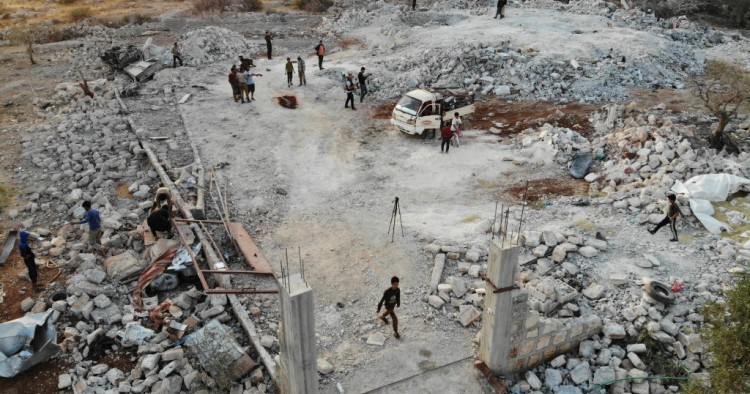The death of Abu Bakr al-Baghdadi is one of the biggest counter-terrorism achievements of the 21st century and by all accounts, a result of impressive cooperation between America and partners in Iraq, Turkey, and the Syrian Democratic Forces (SDF). However, as significant as his death might be, this will not spell the end of ISIS — in Syria and Iraq or further afield. The covert, semi-compartmentalized, guerrilla infrastructure that Baghdadi put into place over 18 months ago guarantees that ISIS remains as capable of sustaining a slow-burn insurgency in the Levant for the time being. Moreover, all of the necessary ingredients for an ISIS resurgence remain prevalent in Iraq and especially in Syria — not least with the prospect of an intractable Turkish-Kurdish and Arab-Kurdish conflict in the northeast and great uncertainty over security in the oil-rich east of the country.
Baghdadi was killed in Idlib, an area in Syria’s northwest that has been deeply hostile to ISIS since 2014. However, the specific border strip surrounding the village of Barisha, where he is likely to have lived for much of 2019, was a rural stronghold of hardline al-Qaeda loyalists. In fact, Baghdadi appears to have been residing with a senior member of al-Qaeda affiliate Tanzim Huras al-Din (HaD). Whether that can be explained by personal history remains to be seen, but the prospect of an ISIS re-engagement with hardline al-Qaeda loyalists has been on the cards for some time. Since al-Qaeda recognized the de facto secession of its former affiliate now known as Hayat Tahrir al-Sham (HTS), some of its loyalist representatives in Syria have explored avenues for a détente with ISIS, well-placed sources tell me. Whether some form of détente has been agreed remains unlikely, but that uncertainty increases the complexity of an already very real global terror threat posed by the remains of ISIS and the expanding activities of HaD.
As an obsessively bureaucratic terrorist organization, ISIS will have a clearly laid out plan for Baghdadi’s succession. While an interim period of internal uncertainty about ISIS’s future is likely, one shouldn’t expect any significant shift in ISIS activity in Syria or Iraq. ISIS has existed far longer without territory than with it and it’s survived and gone on to thrive after the loss of multiple leaders. This is familiar territory for a terror organization that perceives its existence as intrinsically linked with death, or martyrdom. Had America’s posture in Syria not been so uncertain, and if President Donald Trump had not effectively green-lighted a Turkish incursion into the northeast, we would have a much better chance of capitalizing on Baghdadi’s death. But as it happens, much of our attention will likely now remain focused on re-formulating our presence in Syria; re-managing our partner relations; and intensively deconflicting within an increasingly challenging geopolitical environment.
Charles Lister is a Senior Fellow and the Director of MEI's Countering Terrorism & Extremism program.
Photo by OMAR HAJ KADOUR/AFP via Getty Images
The Middle East Institute (MEI) is an independent, non-partisan, non-for-profit, educational organization. It does not engage in advocacy and its scholars’ opinions are their own. MEI welcomes financial donations, but retains sole editorial control over its work and its publications reflect only the authors’ views. For a listing of MEI donors, please click here.













